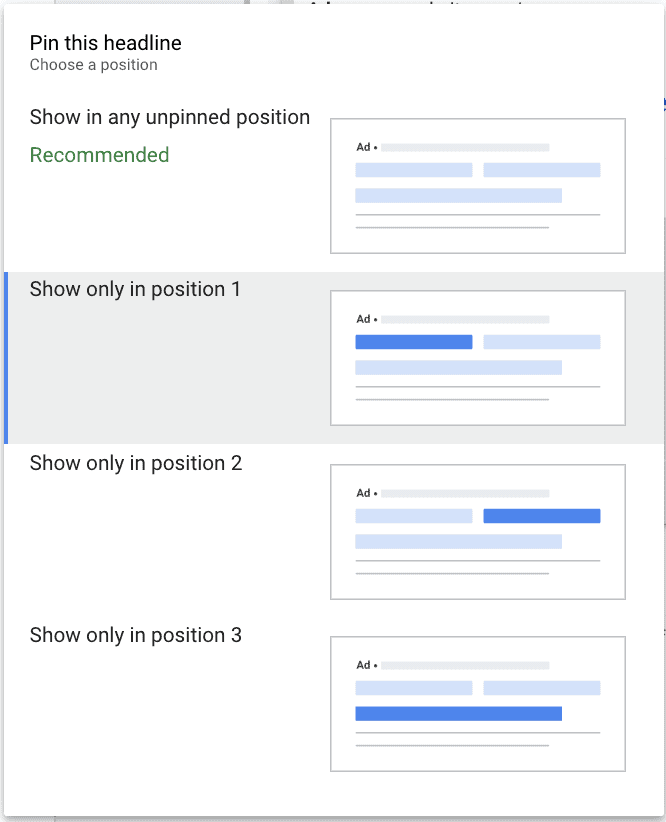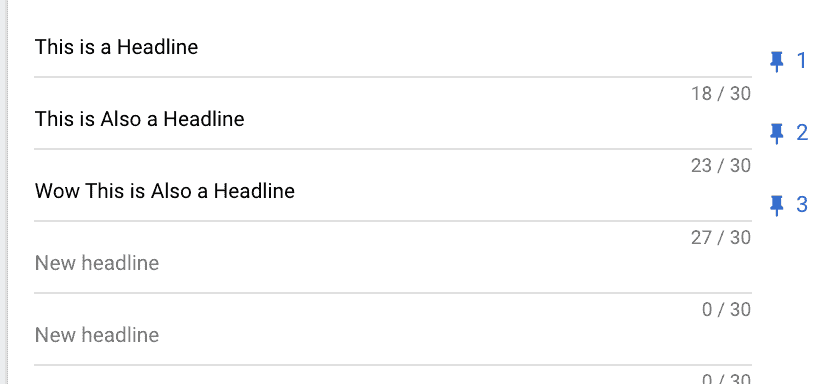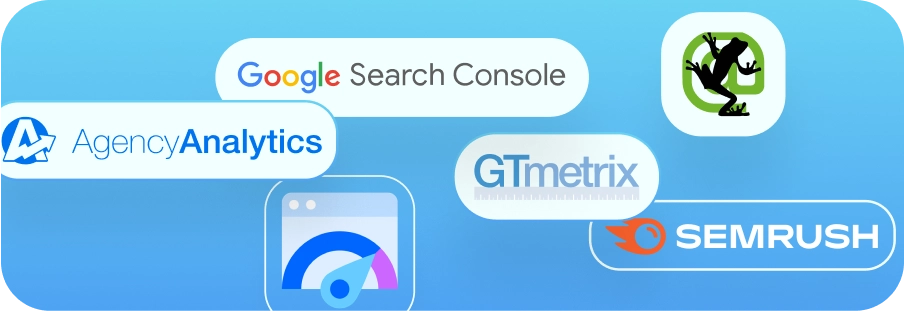Actions to Take Before and After Responsive Search Ads Totally Replace Expanded Text Ads
In the fall of 2021, Google announced that Expanded Text Ads are going away forever on June 30, 2022. From then on, Responsive Search Ads will be the only type of campaign you can create. (That is, until they release the next best thing – any ideas as to what may be?) You can read the original announcement here, written by Sylvanus Bent, a Product Manager for Google Ads.
While this announcement came as a shock to many advertisers, the update has been a long time coming. Google has been taking steps towards automation for quite a while:
- In 2016, Google introduced Smart Bidding strategies, an alternative option for manual keyword bidding.
- In 2018, Google introduced a beta version of Responsive Search Ads.
- In 2022, Expanded Text Ads will be a thing of the past.
- What’s next? We imagine eventually we’ll have to say adios to manual keyword bidding.
Not familiar with Responsive Search Ads? RSAs are a type of ad consisting of up to 15 headlines and 4 descriptions. Google utilizes automation to create thousands of different asset combinations. Over time, Google gathers data on the combinations that perform the best and (should) serve those in search results more often.
Before the Update: What does this update mean for you and your search campaigns?
There are two steps you should take right now to prepare for this change.
- Add Responsive Search Ads into each of your ad groups
- Create Expanded Text Ads for use in the future
If you haven’t already, integrate RSAs into your campaigns
Google now recommends that you include at least one RSA in all of your ad groups. We may not always agree with everything that Google recommends, but in this case, we do.
First, you’ll want to start practicing putting together this relatively new ad type. You want to be prepared for July 2022, rather than jumping into this new feature for the first time.
If you wait until the last minute, you might struggle to get your campaigns in order once ETAs are officially gone.
After Google sunsets ETAs, you can still enable and pause them as you please
While you will no longer be able to create ETAs, you can still utilize them in your campaigns if they were configured before June 30, 2022.
This means you can take time now to write ETAs that you might want later down the line, upload them into your ad groups, and pause them until you need them.
Get creative! Come up with lots of variations (within reason – don’t waste time on any nonsensical combinations of headlines and descriptions simply for the sake of their existence) and begin testing them out now. By the time July 2022 rolls around, you should have enough data to determine which are the most effective for conversions.
Related Reading: How to Audit a Google Ads Account, A Complete Guide
After the Update: Creating and optimizing ad copy after ETAs are gone
Setting yourself up with multiple ETA options is all fine and dandy, but that will only take you so far. At some point you will need to create a brand new campaign and your only ad copy option will be the RSA.
Will Google recommend only utilizing one RSA per ad group? As of writing this article, we have not seen any specific guidance on best practices in a post-ETA world.
Here are our recommendations for testing and creating RSA variants:
- Try capitalization variants
- Get familiar with pinning
- Continue creating “fake” ETAs
Capitalization alternatives
Try creating different variations by utilizing sentence case in the descriptions of one ad and title case in the descriptions of another.
- Sentence Case: You capitalize sentences like you would when you’re writing normally.
- Title Case: You Capitalize Every Word Except for Minor Words.
Pinning will become your new best friend

When creating an RSA, you have the option to pin headlines in certain positions.
When we’re creating responsive search ads, we write with three types of headlines in mind:
- Headlines that contain targeted keywords
- Headlines that contain special offers, discounts, or other unique, relevant info about the product or service
- Headlines with short CTA (call-to-action) phrases
Pin each type of headline in the same position so the ads are presented in a manner that you’d like them to.
You can also try pinning 2-3 similar headlines to the same position. Google will rotate between those pinned headlines.
Alternatively, try testing out ads with no pinning whatsoever.
Keep in mind that if you have headlines pinned to all available positions, any unpinned headlines will not show up in search results.
Related Reading: How to Write Call-to-Action Phrase That Drive Real Results
Responsive search ads can be made as “false” ETAs

Technically, a responsive search ad only requires 3 headlines and 2 descriptions to serve. You can pin each headline into positions 1, 2, and 3. Voila! It’s as if expanded text ads are still here.
This, however, may not be the best strategy. Google may assign a higher rank to ads that have more than the bare minimum of assets required for an ad to serve in search results.
Other tips and tricks to know about responsive search ads
Familiarize yourself with the Ad Strength tool

When you build a new RSA, Google will rank your ad’s strength on the following scale:
- Poor
- Below Average
- Average
- Above Average
- Excellent
According to Google, “Ad strength is an indication of the relevance and diversity of your ad combinations. Having more relevant and unique content can help you get the right ad in front of your customers and improve your ad’s performance.”
The Blackhawk team asked our Account Strategist whether your strength score has an impact on your Ad Rank or Quality Score. Here’s what they said, “The ad strength measurement system is generally there to help advertisers create better ads.”
Our conclusions? First, don’t conflate Quality Score and Ad Rank with Ad Strength. Second, don’t fret if you can’t secure a perfect score. Third, don’t completely ignore the tool either – it’s there to help you build better content.
"The ad strength measurement system is generally there to help advertisers create better ads."
Account Strategist, Google
RSA reporting leaves a lot to be desired, here's how to make the most of what's provided

Looking at the ad view in your Google Ads dashboard, you can clearly see the data on clicks, impressions, CTR, etc. for each responsive search ad, but if you’ve created an ad with 15 headlines and 4 descriptions, there is no clear way to see which combination of assets was most effective.
This is where the “View assets details” underneath the ad comes in handy. Click this link to view more information about which particular pieces of the ad have received the most impressions.
You can then click on Combinations to view which variants have received the most impressions.
Again, there is a lot of information missing. You can’t see how many clicks each variant has received or which variant has led to the most conversions.
We’ll have to read between the lines and make some assumptions as to which assets are most compelling to the searchers of the world.
When your RSAs have received at least 5,000 impressions, Google will also include a Performance Rating. Scaling your ads as follows:
- Pending: This asset doesn’t have any performance information yet. A performance rating for this asset will be shown once enough information has been collected.
- Learning: Information needed to rate this asset is still being collected. A performance rating for this asset will be shown once enough information has been collected.
- Low: This asset is one of your lowest performing assets of its type. Replacing this asset could improve your overall ad performance.
- Good: This asset is performing well relative to other assets of this type. Keep this asset and try adding more assets to improve the performance of your ad.
- Best: This asset is one of your best performing assets of its type. Adding more assets like this one could increase your chances for better ad performance.
Tailor your ads to user locations with location insertion
If you use the following syntax in your headlines, Google will automatically insert the most relevant city, state, or country into the ad copy on your behalf:
- {LOCATION(City)}
- {LOCATION(State)}
- {LOCATION(Country)}
For example, you can write a headline such as “Now Delivering to {LOCATION(City)}” and based on the user’s location, Google will insert the correct city for you.
Looking for assistance with your Google Ads?
This might all seem rather overwhelming if you’re unfamiliar with the Google Ads platform. This can seem even more intimidating if you’ve also got an entire business to run at the same time.
Instead of taking on this burden yourself, consider partnering with a team of paid search professionals. Get in touch with Blackhawk today to learn more about our Google Ads management services.




